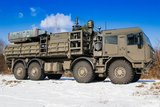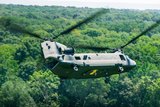NATO membership’s ripple effect: Transforming Nordic air forces
The exact form of the Nordic Air Force concept remains uncertain with several details requiring further refinement. (Photo: Saab)
After almost two centuries of maintaining official military neutrality, Sweden made a historic decision on 7 March 2024 to join NATO, expanding its role on the global NATO stage while opening avenues for closer cooperation with its Nordic counterparts.
The Swedish Armed Forces, especially the Swedish Air Force (Flygvapnet), had long been shaped by the country’s commitment to impartial defence, said Maj Gen Jonas Wilkman, chief of the Swedish Air Force. Saab itself, Sweden’s foremost defence company, was established by a nation ready to stand alone with a strategic focus on addressing potential threats from Russia.
Talking during the RUSI
Already have an account? Log in
Want to keep reading this article?
More from Air Warfare
-
![Ukraine and Sweden mark first major step towards potential Gripen E export deal]()
Ukraine and Sweden mark first major step towards potential Gripen E export deal
The letter of intent, signed on 22 October, is the first move in a “long road” towards Sweden strengthening the Ukrainian Air Force with up to 150 Gripen aircraft.
-
![Shield AI unveils new autonomous VTOL fighter jet concept]()
Shield AI unveils new autonomous VTOL fighter jet concept
Named X-Bat, the AI-controlled vertical take-off and landing drone is expected to enter production by 2029, with first flight tests estimated to take place a year earlier.
-
![How satcom is shaping the future of fast, accurate warfare (podcast)]()
How satcom is shaping the future of fast, accurate warfare (podcast)
"Speed is the key advantage and accuracy is the key outcome": Amazon Kuiper Government Solutions’ Rick Freeman talks to Shephard’s Georgia Lewis about how space-as-a-service is transforming defence connectivity and access to satellite capabilities.
-
![US Army order for CH-47F Block II aircraft takes total contracted to 18 in rapid fielding effort]()
US Army order for CH-47F Block II aircraft takes total contracted to 18 in rapid fielding effort
Boeing has delivered six Chinook CH-47F Block II production helicopters to the US Army, with the helicopters now undergoing a series of evaluations to demonstrate their enhanced capabilities. The company is working with the army on a path forward for Lot 6.
























